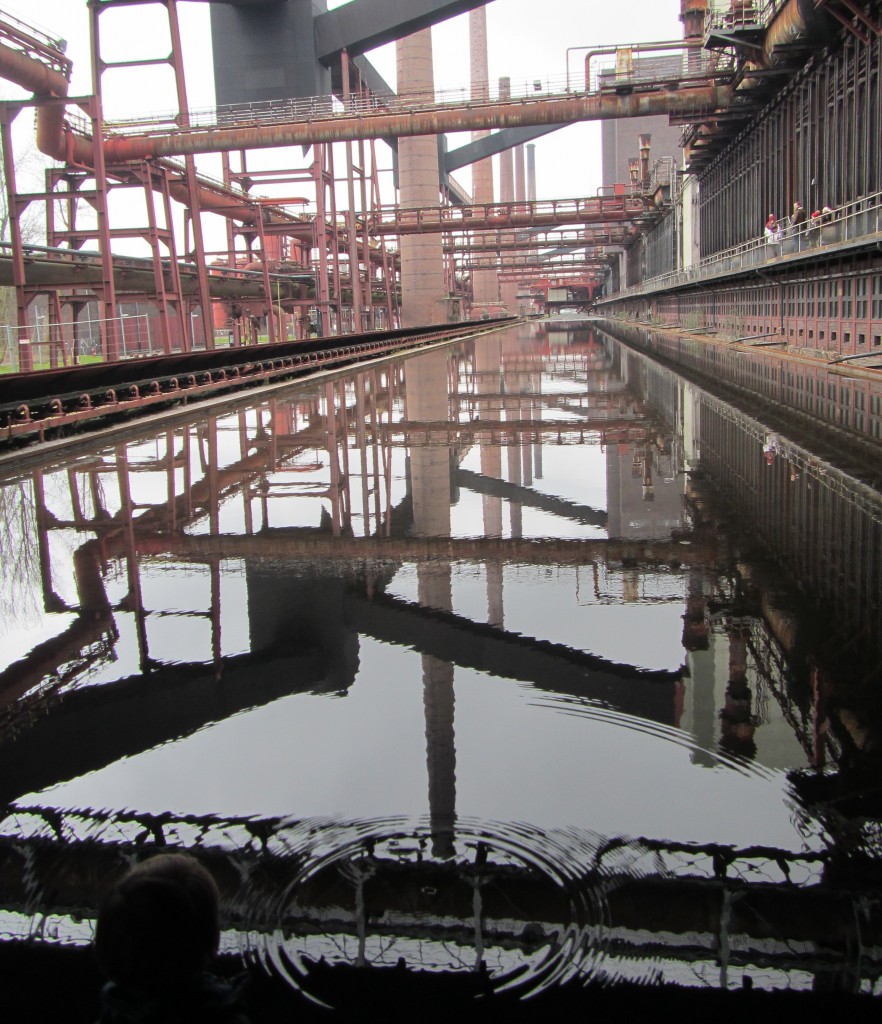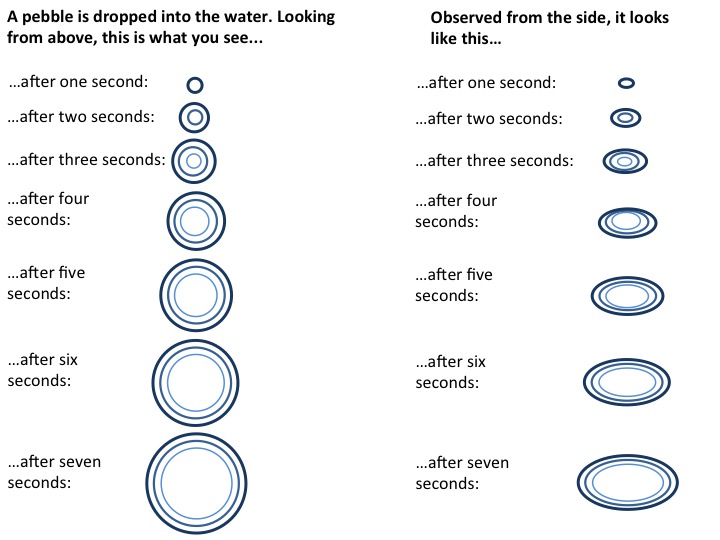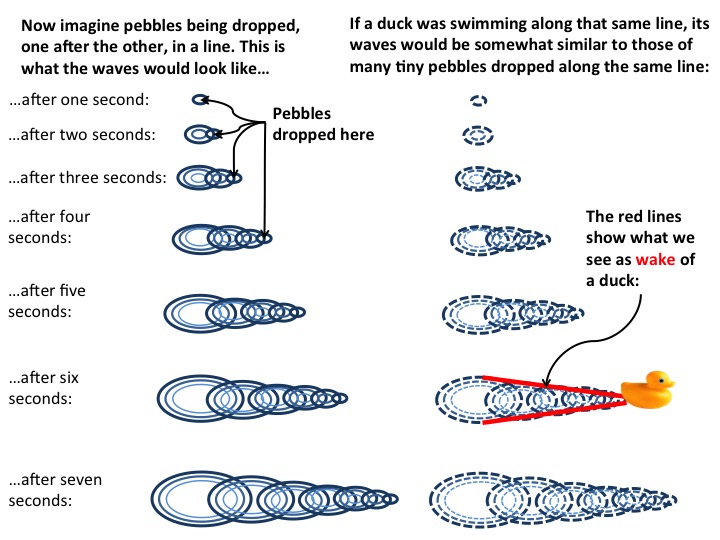
If waves spread equally in all directions, then how come we see linear wakes?
If waves spread equally in each direction along the water’s surface, then how come ships (or ducks) have wakes that are just those long lines of waves and not circular at all?
So. Kids are typically familiar with what it looks like when you throw stuff in the water (for proof see below: my godchild on a “Tour de Ruhr” where I learned tons of stuff about mining in Germany. I had no idea that stuff was so interesting! Anyway, I digress. Obviously you had to throw stuff in the water when the reflections are this awesome!)
But then wakes are seemingly behaving in a very different way. For a nice example of a wake, see the movie below. In that movie, you are looking backward from a boat at its starboard wake. The boat has been sailing straight ahead for a bit after turning to the starboard side (and you will see the resulting curve in the wave in the movie).
Even though slightly curved due to the ship’s change in heading, that wave clearly doesn’t look like a ring around the boat (from where I found the video on my phone I think it must have been a touristy boat in Bergen that I went on with my friend Leela).
So. Good question, isn’t it? Why does the wave look straight? Now don’t tell me it has something to do with interference and stuff, because I need to explain it to a young kid.
I have attempted an explanation, but I am really not sure if it works. What do you think? Check it out and let me know!
The image below shows a sketch of what it looks like if you throw a pebble into the water (or the pattern a raindrop would make). Ideally, we would only see one ring, but since a secondary drop is typically thrown into the air (and sometimes a tertiary) let’s work with three concentrical rings of waves so that the pattern looks as much as possible like what the kid would be likely to observe. The fading colors indicate that the second and third ring have a smaller amplitude than the first one (whose amplitude should be decreasing as time goes on, but let’s not get too technical here…).
So now how to go from the pebble to the wake? Continuous pebble drops!
From this we have the bow wave and the choppy water inside those two rays of waves. Of course, there we would also have turbulence due to the ship’s propeller or the duck’s feet etc, but maybe this is enough for now?
Except to add that those kind of waves are shock waves (the source of the waves traveling faster than wave speed) — in 3D and in air, the same physics would lead to sonic boom! :-)
Leave a Reply
Share this post via



Rain on water — why does each raindrop cause several concentric waves? | says:
[…] we observe that each raindrop causes several concentric waves with different radii. In my post on Tuesday I just stated that that was what we observe, but today I want to look into the […]